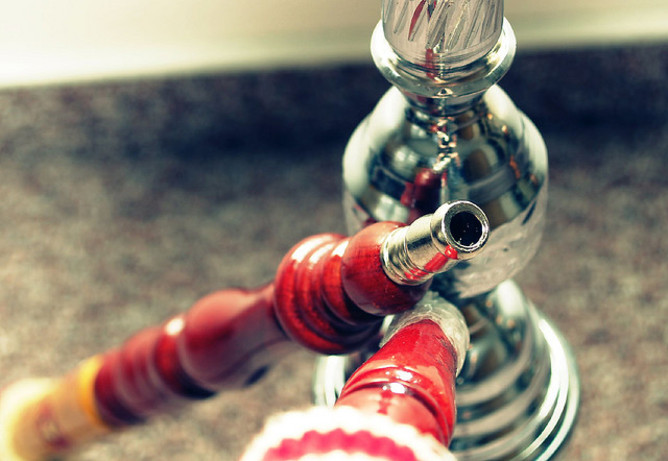On average, only 3% of heavy metals present in tobacco are removed and this would not be enough to protect users from exposure to the toxins.
Shisha smokers claim that a hookah is less damaging than cigarette smoking due to 'filtering' by bubbling through water but a typical hookah smoking session can expose someone to 100-200 times the volume of smoke in a single cigarette.
Shisha is a waterpipe in which a mixture of tobacco and flavorings or molasses sugar is smoked. The tobacco is heated beneath charcoal, the heat pushes the smoke into a water container where it bubbles through and then leaves the water container via a hose and inhaled. It is said to have originated in the Persian Empire in the 16th century but has since spread worldwide. Plants like the tobacco plant can absorb and accumulate heavy metals depending on the soil in which they are grown.
Long term exposure to these heavy metals increases incidence of head and neck cancers, and other medical conditions.
Researchers from the German Jordanian University and the Royal Scientific Society Amman-Jordan, writing in BMC Public Health, say they analyzed four tobacco samples bought at a local market that represented the most popular brands and flavors in Jordan. Each sample was tested for total heavy metals present, including copper, iron, chromium, lead and uranium. The amount of metal in smoke was calculated by subtracting the concentration of metals present in the ash residue and the water container after a smoking session from the total heavy metal concentration in the original shisha tobacco sample.
Lead researcher, Akeel Al-Kazwini says, "Since the trend of smoking waterpipe has increased markedly among the young in the last decade, not only in the Middle East but worldwide, our research adds to the evidence about its potential health hazards. It is also important to highlight the fact that water is mainly cooling the smoke, and not filtering it as is commonly believed. "
The levels of heavy metals in three of the four brands of tobacco were found to be the same. The amount of heavy metals in the water container was relatively low for all four brands - an average of 3% of total heavy metals present. This is compared to 57% in the smoke and 40% in ash residue. The most abundant metal present in smoke was uranium, which was present on average in 800 parts per billion across 4 samples. US FDA and WHO recommended maximum limit of Uranium in drinking water of 30 parts per billion (equivalent to 30 micrograms per liter).
The researchers point out that the results for these four tobacco samples would not be representative for all shisha as differing waterpipe mechanisms can result in different exposure levels. They also highlight that the amount and type of heavy metals present in tobacco leaves can vary depending on where the plant has been grown.

Credit: Jan Kromer
The researchers conclude that more needs to be done to make people aware of the hazards of smoking shisha. Akeel Al-Kazwini says, "At present, the waterpipe tobacco industry operates without regulation and the impact of health warning labels on waterpipe use has not been extensively investigated. It is therefore essential that regulators and policymakers prioritize the correct labeling of waterpipe tobacco products in order to ensure users are informed of the dangers."
Citation: Compartmental Analysis of Metals in Waterpipe Smoking Technique, Akeel T Al-Kazwini, Adi J Said and Stephanie Sdepanian, BMC Public Health 2015: DOI 10.1186/s12889-015-1373-6






Comments